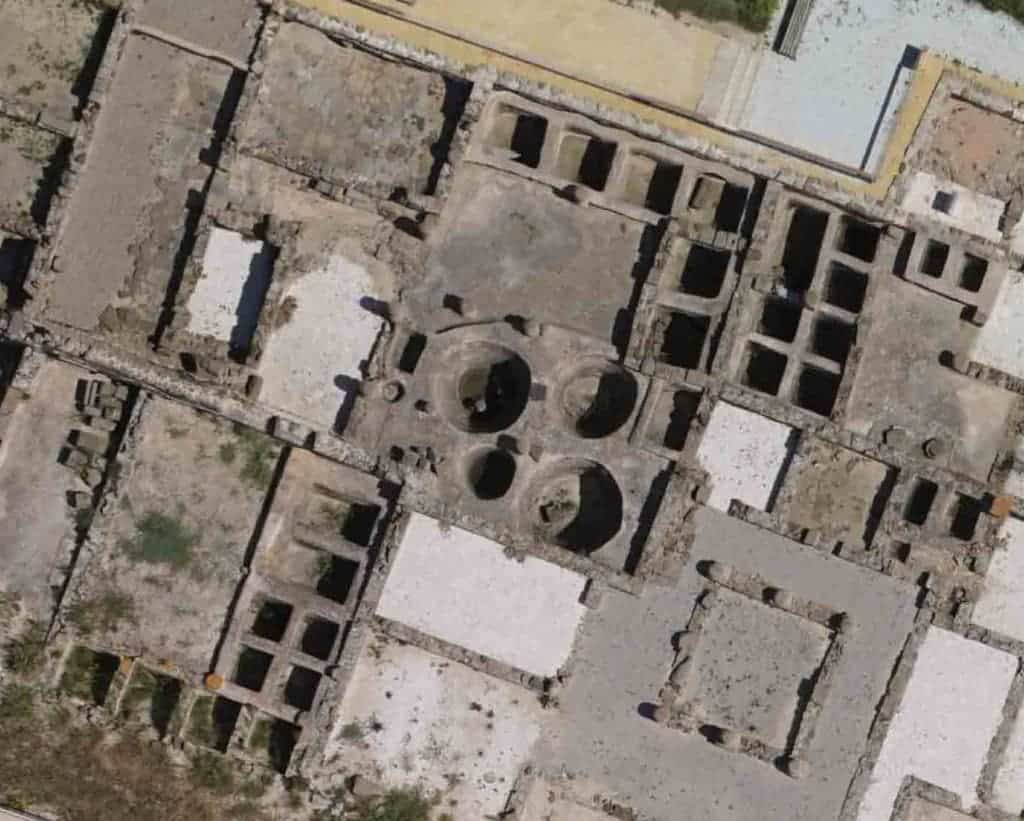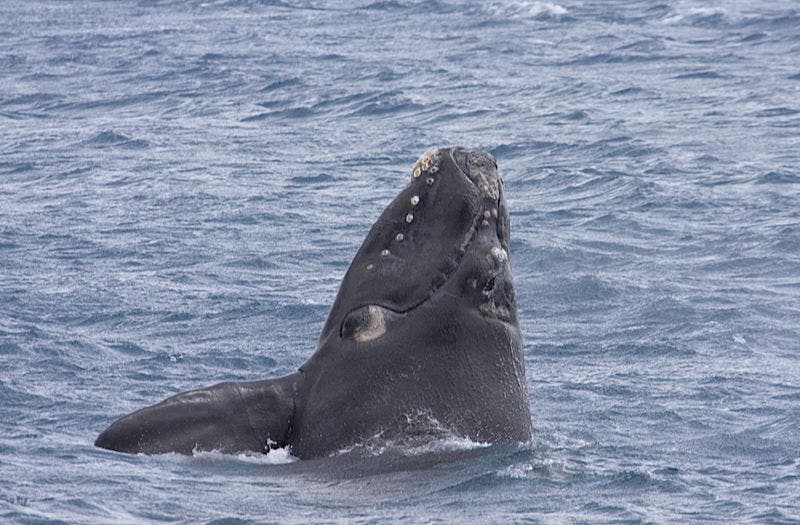The Roman Empire used to dine on whale fished from the Mediterranean Sea — the two species have, since then, virtually disappeared from the area and the wider North Atlantic, however.

Image credits José Eugenio Gómez Rodríguez.
Bones discovered in the ruins of a Roman fish salting compound near the strait of Gibraltar suggest that the Empire’s subjects may have hunted whales for food. The implications are interesting not only from a historical and archaeological point of view — the Romans are not traditionally regarded as accomplished sailors — but also from an ecological standpoint.
Bread, games, and salted whale
Back in Rome’s heyday, the Gibraltar region served as a central fish-processing hub. Ruins from hundreds of factories outfitted with large salting tanks (indicative of an industrial-scale endeavor) still litter the area. Based on the scale of the industry, it’s likely that the products manufactured here used to reach far and wide onto plates across the Roman Empire.
The recent discovery of whale bones amid these workshops in the Gibraltar region stands to change our understanding of the Roman fishing industry and the history of two whale species — which have now virtually disappeared from the North Atlantic area.
One team, led by researchers from the Archaeology Department at the University of York, drew on DNA analysis and collagen fingerprinting to identify the bones — their results showing the remains belonged to the North Atlantic right whale (Eubalaena glacialis) and the Atlantic gray whale (Eschrichtius robustus).
The findings surprised them, to say the least. On the one hand, the Mediterranean, despite housing several species of whales and other cetaceans today, was always considered outside of the historical range of both the gray and right whale. On the other hand, the Romans simply didn’t have the means to fish such large prey — none that we’re aware of, anyway.

Right whales are listed as Endangered under the IUCN’s Red List, and are further protected by the Endangered Species Act in the US. The species is considered to be one of the hardest-pressed species of whales in the world. Populations in the western North Atlantic can only boast a few hundred individuals, while those in the eastern North Atlantic may already be functionally extinct, with under 50 members.
Gray whales technically fare much better and are listed under ‘least concern’ overall, as there are enough individuals to ensure a stable population and the last three years have seen an increase in their numbers. The western subpopulation is listed separately — based on genetic evidence showing they’re an isolated, distinct group — as ‘Critically Endangered.’ However, it must be noted that the gray whale has been completely wiped out in the North Atlantic, and the family’s range is now limited to the North Pacific exclusively.
Both species got so ragged after centuries of whaling. For context, the first records of right whale hunting come from Basque (northern Spain) whalers plying their trade in the Bay of Biscay in the 11th century. Gray whales have been hunted by indigenous populations since antiquity, although it’s likely that right whales suffered a similar fate.
Previously widespread
The findings, however, suggest that both species once inhabited much wider ranges than we ever suspected. The findings were only made possible by their use of “new molecular methods” to analyze the whale bones, the team says.
“Whales are often neglected in Archaeological studies,” says Dr. Camilla Speller, paper co-author, “because their bones are frequently too fragmented to be identifiable by their shape.”
“Our study shows that these two species were once part of the Mediterranean marine ecosystem and probably used the sheltered basin as a calving ground.”
Since both species are migratory, their presence east of Gibraltar (the strait that connects the Mediterranean sea to the Atlantic) suggests they came here to give birth in safer waters.

Image credits Gregory “Slobirdr” Smith / Flickr.
The findings also raise the possibility that the Romans developed a form of whaling alongside traditional fishing practices. However, the evidence is far from conclusive. There is evidence that they fished for large species such as tuna, but based on what we know of their sailing and boat-building capabilities, it seems rather unlikely they would be able to hunt something as large as a whale.
“[…] perhaps the bones are evidence of opportunistic scavenging from beached whales along the coast line,” adds Dr. Speller.
“Romans did not have the necessary technology to capture the types of large whales currently found in the Mediterranean, which are high-seas species. But right and gray whales and their calves would have come very close to shore, making them tempting targets for local fishermen,” says study lead author Dr. Ana Rodrigues.
The opportunistic approach is more likely, especially since we know Basque whalers centuries later would successfully hunt for their prey using small rowing boats and hand harpoons.
The findings also help clarify historic sources such as texts penned by Roman naturalist Pliny the Elder, which describes killer whales attacking newborn calves and their mothers in the Cadiz bay. Today, such descriptions simply don’t make any sense, “but it fits perfectly with the ecology if right and gray whales used to be present,” according to co-author Anne Charpentier, a lecturer at the University of Montpellier.
The authors hope that — armed with their findings that coastal whales once formed an important part of the Mediterranean ecosystem — historians and archeologists can make better sense of other primary sources.
The paper “Forgotten Mediterranean calving grounds of gray and North Atlantic right whales: evidence from Roman archaeological records” has been published in the journal Proceedings of the Royal Society of London B.






